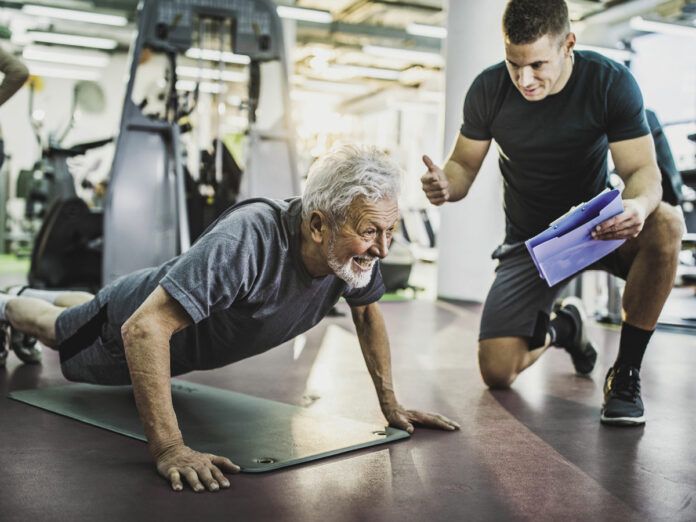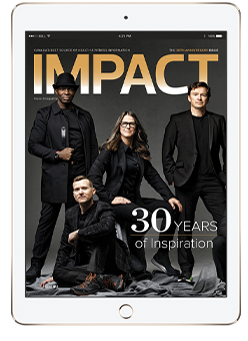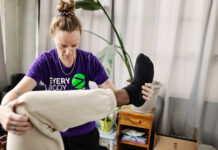
Over the last century, we have added more than 30 years to the human lifespan. Sadly, healthspan — the period of our lives during which we’re in good health — has not kept pace with the increase in longevity. So why is healthspan more important than lifespan?
While longevity is great, who wants to live to be 120 and feel like they’re 120? In the search for behaviours that might help us age well, there are many axioms. People talk about mental or brain health, bone health, metabolic health, heart health, but we rarely hear about muscle health. That changes now. Simply put, muscle matters.
Muscle is most obviously the tissue of locomotion. Without muscle, or with weaker muscles, we can’t or don’t move well.
Various disorders of neural or muscular origin serve as potent reminders of how much more difficult life is when our physical mobility is compromised. However, all of us are under the influence of one process that causes just about all our biological systems to decline: aging.
As we age, the loss of muscle is termed sarcopenia. Derived from Greek, the word literally means ‘poverty of flesh.’ So, can we prevent this ‘poverty’ and manage sarcopenia? Preventing any normal age-related process is next to impossible; however, we can slow the decline and, in doing so, preserve our mobility in later life.
Muscle plays many roles in our general health beyond locomotion. For example, muscle plays a central role in regulating blood sugar. Following consumption of a higher carbohydrate-containing meal, particularly one composed of ‘simple sugars’, like a can of pop or a bowl of white rice, our blood sugar levels rise. If these levels remain elevated, which is a hallmark of Type 2 diabetes, then the elevated sugars can cause damage.
Muscle is like a sink for blood sugar. As such, it is the single largest site for disposal and storage of post-meal blood sugar. In short, having a large and active — you still need those muscles to move — muscle mass is important in regulating blood sugar and may reduce our risk of developing Type 2 diabetes and its complications.
The role that muscle plays in controlling blood sugar is critical. People with Type 2 diabetes have much higher rates of heart disease, adult-onset blindness, kidney problems, and adult amputations. Take-home message: hang onto your muscle for as long as possible to lower your risk of acquiring Type 2 diabetes or managing your diabetes better.
What if I told you that managing your body weight was also a matter of managing your muscle? While it may not be an exact relationship, one of the things we do know is that for most people, the biggest contribution to the amount of energy they burn in a given day is called their resting metabolic rate or RMR. Your RMR is a function of all the active metabolic processes in your body and the energy that’s required to keep them running.
Even if you do little to nothing movement-wise all day, you still expend energy to keep your heart beating, contracting the muscles needed to breathe, and many other metabolic reactions. In most people, when we distill their RMR down to the tissues that contribute to energy expenditure, you can chalk it up to their liver and their muscle. Your liver might be, relatively speaking, small, but it’s very active metabolically. While not as metabolically active as your liver, your muscle is much larger, so it burns a fair amount of energy too. Now think about being physically active, and it’s like you’re firing up the muscle, burning more energy. All weight loss and gain runs, at some point, through what scientists refer to as energy balance: energy in versus energy out. The goal is to keep those processes balanced – energy in (food and drink) = energy out – to mitigate weight gain (or loss). By hanging onto a larger, and more active (are you sensing the pattern yet?) muscle mass we may be better able to manage our weight.
Hopefully, by this point, you’re a convert if you weren’t already. Muscle is an important, but often under-appreciated tissue to hang onto and keep in good shape as we age. So what can we do to slow, as you can’t prevent, sarcopenia and age well? It’s simple: move it or lose it!
Like many organs, including your brain, bones, and muscle, if it doesn’t get worked, it doesn’t work! Quite simply, stay as physically active for as long you can and work the muscles you want to hang onto. There is one important caveat, however, that you need to subject your muscles to some kind of load. This is commonly achieved through weightlifting or resistance training.
The how of resistance training can be made overly complex. Nevertheless, resistance training can be ridiculously simple and require only your perception of your effort as a guide to how hard to work. The bare-bones for a resistance exercise program are as follows:
- Minimum of twice weekly
- Focus on major muscle groups: legs, chest and back
- Perform a lift with a weight that you can safely lift somewhere between 10-20 times before you rate your effort as an 8/10 where 1/10 is a very light effort (everything other than rest) and 10/10 is a maximal effort, and you can’t lift the weight anymore
- You can use any type of weight or something, such as a resistance training band, to provide external resistance, including your own bodyweight
Your first trip to a gym or your first lifting session anywhere can be intimidating for someone who has never lifted weights. If you’ve never lifted weights before, then look for a gym or community program that targets people in your age group and caters to people with any chronic health conditions you may have. If you’re in your 50s, 60s, or beyond, you don’t need a complex program that requires a weight belt, and knee wraps to move a weight.
If you have the means, a personal trainer (PT) can be great. Pick a PT who is qualified, suits your personality style and helps you work to achieve your goals. If you’re finding the program overly complex, hard to follow, too tiring, or causing you pain, then ask for a new program or a new PT. A big point in adopting a new exercise program is that the beginning is always the most difficult. If you can get beyond the first eight to 10 weeks, you will begin to see and feel some remarkable changes!
Keeping your muscle in as active and healthy a state as possible as you age is critical. Loss of muscle means loss of the tissue that disposes of blood sugar, that you’re at risk of weight gain, and that your physical mobility will be compromised.
A key to living better? Mind your muscle. Stay active, stay strong and age well.
What is Sarcopenia?
Sarcopenia is the term given to the gradual age-related loss of muscle mass and strength. Many view sarcopenia as a natural part of aging, which is understandable as there are some things that we have to accept as we age.
We are unsure exactly what causes sarcopenia, but it is likely a combination of diet, physical activity levels, hormone concentrations, and natural, biological, aging processes. It is at this point when many ask when sarcopenia begins?
The answer is that we don’t know; however, population data shows that starting somewhere in our 40-50s we lose, on average, about one percent of muscle mass and about one-two percent of our muscle strength per year. That means someone in their 50s can, by the time they reach their 80s, expect to have lost almost 30 percent of their muscle mass and between 30-60 percent of their strength. On a scale, their body weight may have stayed the same. Why? Sadly, they have replaced their muscle weight with body fat, which is not atypical.
How hard are you working when you are lifting weights?
It’s hard to know how much weight to lift. I think sometimes, it’s much easier for people to just say how difficult something was rather than to know how much weight they need to lift. This is true even if the person is doing a push-up. The idea behind the scale below is for people to become familiar with the concept of effort as a driver of what people should do in terms of lifting weights. There are many free-weight lifting programs available that involve the use of weights, or simply your own bodyweight.
- 10: Maximal effort – I could not have lifted that weight one more time
- 9: I could have lifted that weight one more time
- 8: I could have lifted that weight one or likely two more times
- 7: I could have lifted that weight two or likely three more times
- 5-6: Light effort – I can lift that weight about 20 times
- 1-4: Very light effort – I can lift that weight many times (>30)
- 0: Rest

Read This Story in Our 30th Anniversary Digital Edition
Celebrate 30 years of Canada’s best health and fitness publication!
Explore future trends in health, fitness and food in this special 30th anniversary edition. Find our favourite tech and kitchen must-haves, then work out before making one of our delicious plant-based recipes – all inside this issue!
















